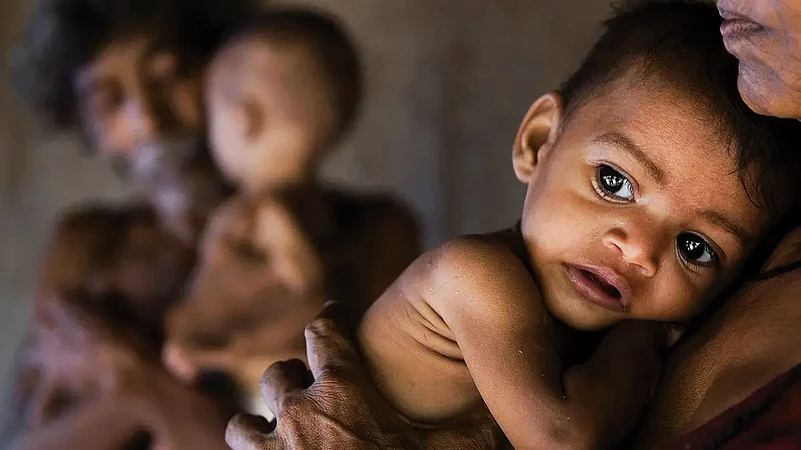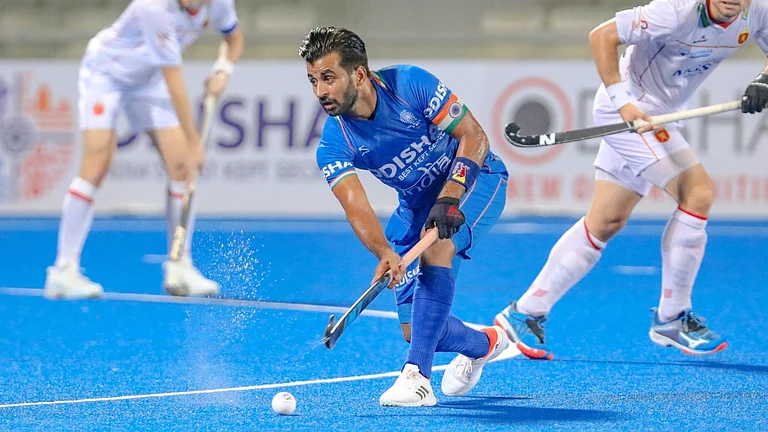In December last year, Anjali—a student of MNM Government Girls School at Gangavati in Karnataka’s Koppal district—vented out her anger against deprivation of basic nutritious food, a chronic problem that plagues more than a quarter of India’s total population. In a viral rant, she called the bluff on local religious leaders who wanted immediate withdrawal of eggs from the Mid-Day Meal Scheme—retitled as Pradhan Mantri Poshan Shakti Nirman (PM POSHAN) recently. Under this scheme, one hot cooked meal is provided to students in government and government-aided schools on a working day. “If the government stops it, we will stage protests since it is our right to eat what we want,” she had thundered amid a group of girls from her school, who were also agitated against only the pure vegetarian diet diktat.
The new welfarism—as part of the neoliberal reforms undertaken by the Congress government in early 1990s and aggressively pursued by the NDA government of late—is yet to ensure the availability of nutritious food to all its citizens. While experts state the problem of malnutrition persists due to factors such as poverty, rural to urban migration, lack of access to remote areas, lack of education, unemployment, overpopulation, gender inequality and climate change, they also blame lack of coherent food policies and poor implementation of the supplementary food and nutrition programmes.

Chronic malnutrition
India’s concerns regarding food security date back to the 1943 Bengal Famine that claimed the lives of about 2-3 million people. The Green Revolution in the early 1970s came on the heels of two successive droughts when the country was heavily dependent on the United States for food aid. Soon after the successful Green Revolution, the country started one of the largest dairy movements that ultimately led to the White Revolution. However, the National Family Health Survey (NFHS) released in November 2021 disclosed that stunting or chronic child malnutrition continues to disquietingly hover around 36 per cent. It further stated that wasting—children whose weight is low for their height—had reduced from 21 per cent to 19 per cent and underweight from 36 per cent to 32 percent at an all-India level. Interestingly, the factsheet released by Niti Aayog mocks official slogans such as Eat Right India, Sahi Bhojan Behtar Jeevan and Fitness ki Dose, Aadha Ghanta Roz.
According to public health experts, in utero and early childhood undernutrition can predispose individuals to becoming overweight and developing many diseases in adulthood. Notably, more than half of the children and women in their reproductive age are anaemic compared to the previous survey findings in spite of substantial increase in the consumption of iron folic acid tablets by pregnant women for 180 days or more, the study maintained.
“Unless we as a society think about the question of hunger, the problem of malnutrition would persist,” says Ghodajkar Prachinkumar Rajeshrao, who teaches at the Centre of Social Medicine and Community Health, School of Social Sciences at Jawaharlal Nehru University. In October last year, the Global Hunger Index ranked India at 101st position out of a total 116 countries. “If we think of malnutrition as lack of some micronutrients, it is only the partial truth. India has one of the highest malnourishment rates in the world if we look at the average adult height or body mass. We have a chronic hunger problem in our country,” says Rajeshrao, adding, “If people are given sufficient food and a balanced diet as per their cultural preferences, then we can address the problem of malnutrition.”
ALSO READ: Beef In The Land Of Humans
Hunger’s medicialisation
In the 1950s, 60s and 70s, according to Rajeshrao, the then governments only focused on calories and protein deficiencies. “At present, the government’s focus has come down to micronutrient deficiencies. This medicalisation of hunger may yield results, but the problem of malnourishment would persist,” observes Rajeshrao. According to the Global Nutrition Report released on November 23, 2021, India has met seven of the 13 global nutrition targets. Yet, over 17 per cent of Indian children below age five suffer from wasting, it added. Incidentally, the figure is much higher than the average for Asia, where close to nine per cent of children are affected. It further stated that India is among 53 countries ‘on course’ to meet the target for stunting, while over 34 per cent of children under five years old remain affected. The figure is higher than the average for Asia, where stunting affects close to 22 per cent.
ALSO READ: Food Apartheid: Non-vegetarians Not Allowed!

Discussing a correlation between scarce gainful employment opportunities and balanced diet, Rajeshrao says, “If we look at our society, food is available. But affordability becomes a real challenge due to skyrocketing prices of all essentials.” Describing it as a paradox, he continues, “On the one hand, the government in some states is banning certain food items, but on the other hand, it is not increasing minimum wages or checking inflation.” Stressing on diversification of community-based nutrition programmes for children and pregnant and lactating women, Rajeshrao elaborates: “The government needs to go beyond cereals distribution. It must provide pulses and oilseeds to the needy in sufficient quantities through the Public Distribution System (PDS). Animal proteins such as milk and eggs, too, need to be included, but this has not appeared on the remotest agenda for the State.”
Many state governments have banned consumption of beef—considered an affordable source of protein for people from low-income brackets—in recent years, whereas the call for an overall meat ban is also on the rise. Rajeshrao adds, “The government should allow people to eat what they have traditionally been eating. It should support their dietary preferences and ensure sufficient and diverse food availability rather than medicalising the problem of hunger.”
ALSO READ: Caste On A Platter: Food For Dalits
Right to food
The Right to Food was first recognised in the Universal Declaration of Human Rights in 1948, but it was only on July 5, 2013, that the National Food Security Act was enacted in India following a Supreme Court order in response to a PIL filed by the People’s Union for Civil Liberties. The Act legally entitles up to 75 per cent of the rural population and 50 per cent of the urban population to receive subsidised foodgrains under the PDS. Dr Vandana Prasad—a public health expert and Right to Food Campaign member—emphasises that India’s food supplementation programmes are lagging behind other countries in terms of quality and diversity. She maintained that most of the recommendations of the Right to Food Campaign are yet to be implemented by the government.
ALSO READ: Mid-Day Meal Scheme: We Need No Politics
With a focus on children, adolescents, pregnant women and lactating mothers, the Prime Minister’s Overarching Scheme for Holistic Nourishment, also known as POSHAN Abhiyan, was launched on March 8, 2018. The Abhiyan aims to reduce stunting among children, who are 0-6 years old across districts with the highest malnutrition burden. It will do so by improving the utilisation, quality and delivery of key anganwadi services. But, while discussing the barrier on access to nutritious food primarily due to policy issues, Dr Prasad cites the example of Pradhan Mantri Matri Vandana Yojana, meant for poor, expecting and lactating mothers working in the informal sectors. “Why are the scheme’s benefits limited to the birth of the first baby only?” she wonders. Advocating reforms and investment in PDS and nutrition supplement programmes such as Integrated Child Development Scheme and Mid-Day Meal Scheme, she says, “The outreach of programmes aimed at sustainable food security is still limited. PDS is far from universal because it considers Census 2011, and its list of beneficiaries needs updating.”
ALSO READ


























